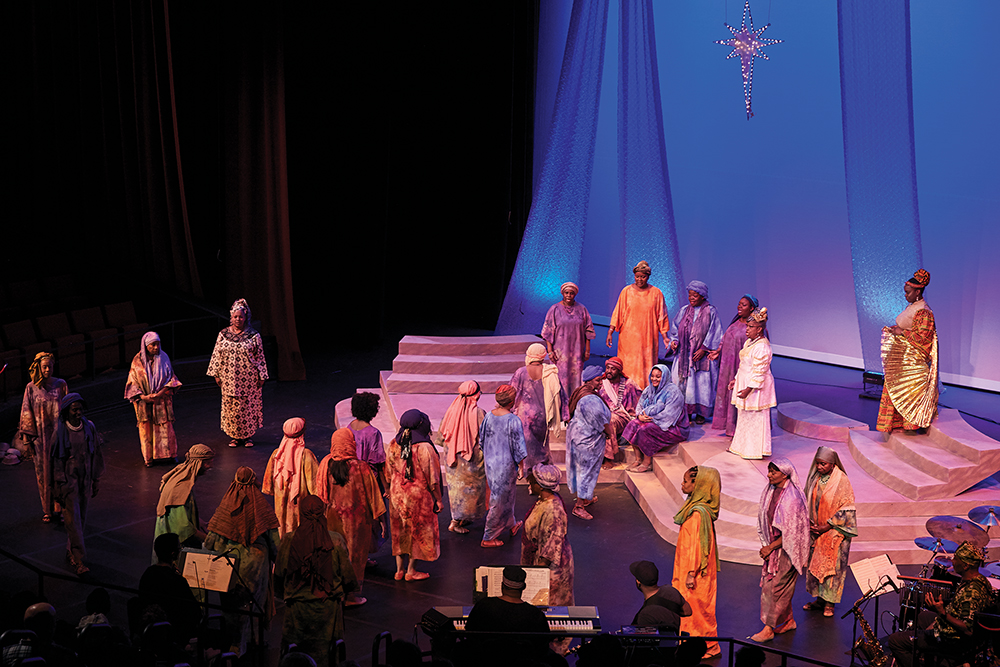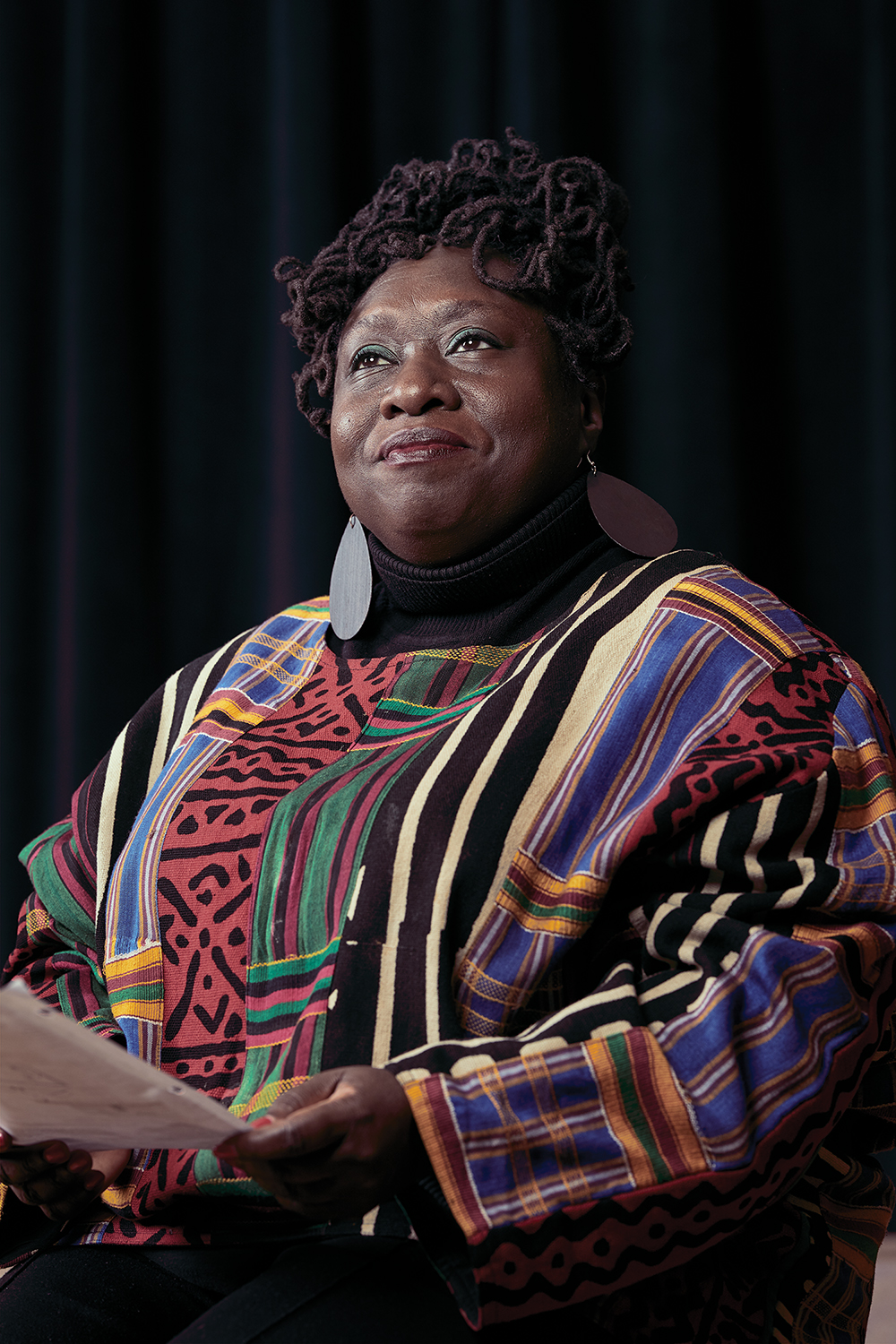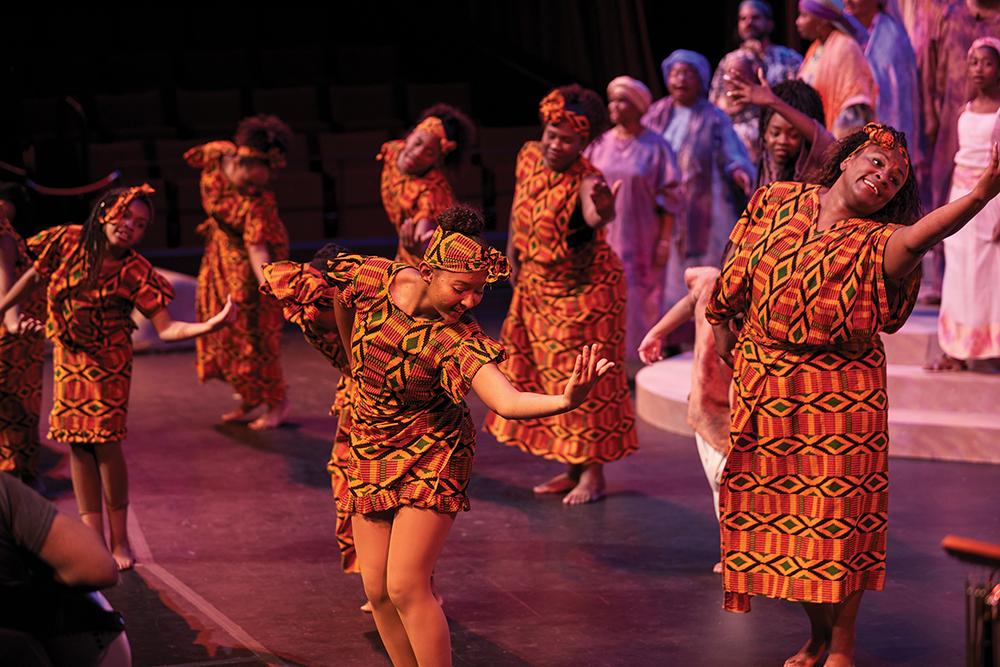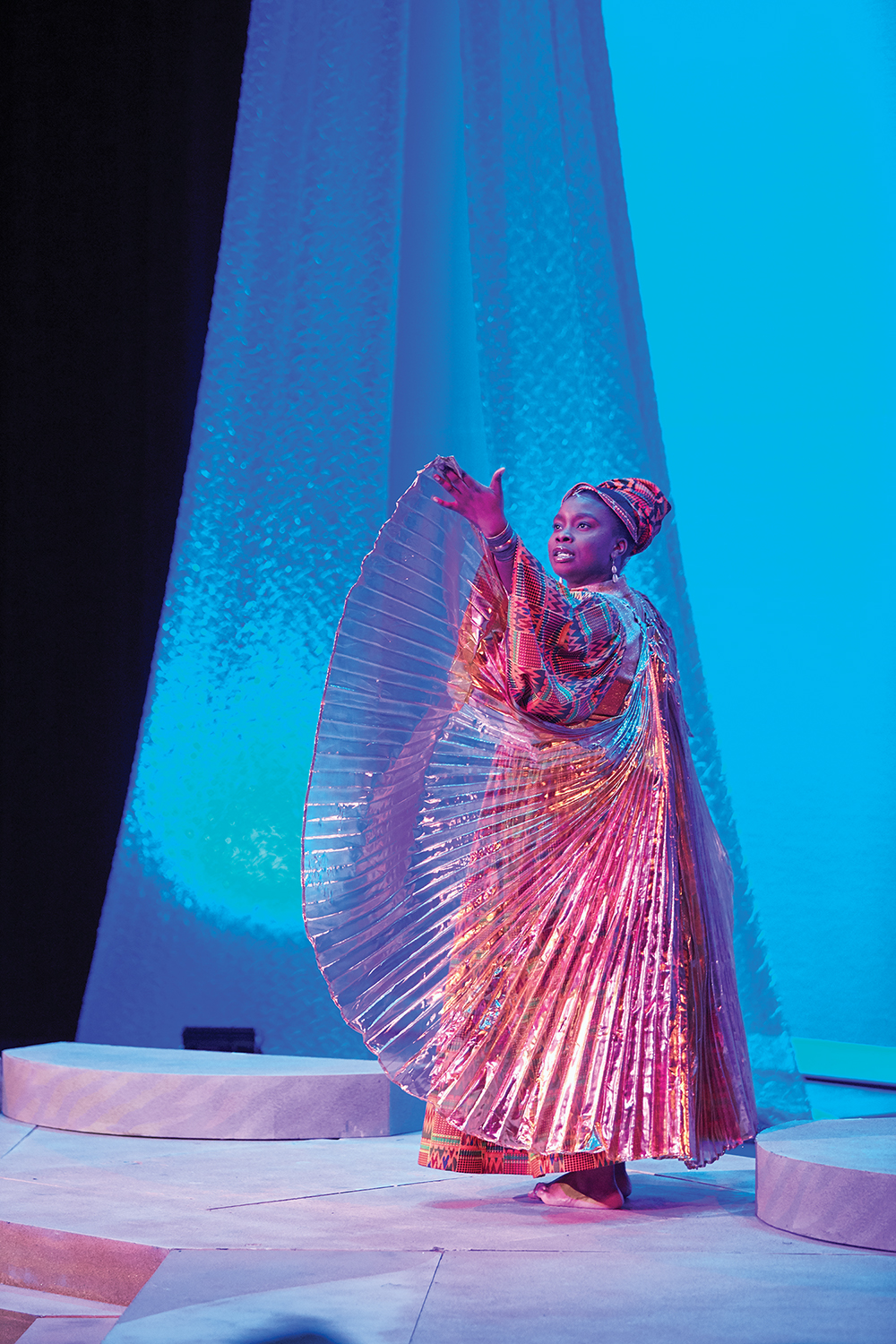Director Dr. Asabi developed a new script and music to present Langston Hughes’ groundbreaking musical as a virtual performance.
by Ayn-Monique Klahre | photography by Joshua Steadman
For Dr. Asabi (Stephanie Howard), Black Nativity has always been a part of life. Asabi, who’s chair of the theater department at North Carolina Central University, first performed in Langston Hughes’ groundbreaking 1961 musical in college at North Carolina Agricultural and Technical State University, then with Mabel Robinson at The North Carolina Black Repertory Company in WinstonSalem for almost 20 years. But last year, she engaged with it in a new way, as director of the The Justice Theater Project’s (JTP) production of the show.
“I’d never thought of myself as directing it, but when the invitation came, I thought, why not?” says Asabi. Each director puts their own spin on the classic, and last year Asabi added in a children’s scene, the role of the griot (a West African storyteller) and a setting rooted in Nigeria, including use of the Yoruba language in some scenes. “The script allows you some artistic freedoms,” says Asabi.
This year, the 10th that The Justice Theater Project will present Black Nativity, Asabi faced two new challenges. First, the pandemic shut the production down to an in-person audience. But when the JTP decided to produce a streamed version of the show, they learned they couldn’t get the rights to air the Hughes script.
This year, the 10th that The Justice Theater Project will present Black Nativity, Asabi faced two new challenges. First, the pandemic shut the production down to an in-person audience. But when the JTP decided to produce a streamed version of the show, they learned they couldn’t get the rights to air the Hughes script.
“The big difference is you won’t have the energy and volume of eighty people on stage raising the roof, you won’t be in the crowd to get up on your feet and start clapping,” says Melissa Zeph, executive producer at JTP. But you can still expect the show-stopping visuals and music of years past. “The costumes will be incredibly vibrant, the music will be huge,” says Zeph. “Music director Michael Williams is bringing in a keyboard, traditional drums, African drums, guitar, violin, saxophone—it’s a huge part of the play.” Asabi agrees: “Pamela Bond does some wonderful, creative things with Afro-centric costumes that light up the stage,” she says, “and the choreography that Kristi [Vincent Johnson] and Toya [Chinfloo] bring is just icing on the cake.”
The dance in the show is a blend of contemporary and traditional African movement. “The dance is the physical expression of the music,” says choreographer Kristi Vincent Johnson. “All of your senses are heightened.” She shares the role of choreographer with Toya Chinfloo, merging her own training in jazz and modern dance with Chinfloo’s expertise in African dance. Johnson started as a dancer with the JTP under the late Baba Chuck Davis, and rose to assistant choreographer, then choreographer as his health declined.
This year, they’ll be working with a new space, with fewer dancers. “The question is, how will this space change or contribute to the dance that’s already there?” says Johnson. “This is not a screen dance, it’s not like a movie where the camera is catching all the angles and you edit.” As of press time, the team was learning its lines (over Zoom), practicing the songs (in masks) and blocking choreography (while social distancing). The show will be recorded in small groups over two days, with a much smaller cast.
“Everyone has embraced the challenges,” says actor and vocalist Taufiki Lee, who, alongside his daughter, has been in JTP’s production of Black Nativity in different roles for the last four years. Lee says the hardest part has been getting used to wearing a mask while singing, “but we’ve adjusted to that and it feels like a safe space for us.”
Lee is excited for this year’s format because it means he can share the performance with family beyond the Triangle. “We love the potential of people seeing it virtually,” he says. “People are getting to see an original piece written and produced by Dr. Asabi, and more people will get to see and experience her work.” Yet there’s still the closeness of being with a longtime cast, says Johnson. “It always feels like a homecoming. When we had our first Zoom about who is coming back, I saw some of the faces I’ve known since 2013,” she says. “That’s what I look forward to, it just heightens the whole purpose of the season.”
Especially for younger viewers, this Black Nativity will offer a way to see the story in a different light: Asabi added a new perspective to guide the story, that of Mary’s niece, whose skepticism about the new baby stealing away the attention becomes the framework for the Nativity story. “I love the idea of children being prominent to the plot, and that even people who are not Christian or who aren’t familiar with the Nativity story can relate to its meaning,” says Asabi. “It is sweet and embraces the real premise of the story,” agrees Zeph.
One of Johnson’s favorite moments in Asabi’s interpretation of the Black Nativity happens right at the beginning. “She had me choreograph the immaculate conception. Usually the first time you see Mary she’s already pregnant, but seeing this moment has a huge impact on the entire show,” says Johnson. “It moves you in a different way.”
In a holiday that can sometimes get caught up in commercialization, Black Nativity offers a reminder of the “reason for the season” for Johnson. Lee, who is also a pastor, agrees: “I wouldn’t do it if it were all jingle bells and snow—this is about Christ.” And the process of making Black Nativity brings as much joy as the performance itself.
“Every day in rehearsal, you’re singing and dancing and praising, you’re really involved in what the holiday is about,” says Johnson. “It’s been a great experience, and especially this year, it’s worth it to make it different and keep it going.”





